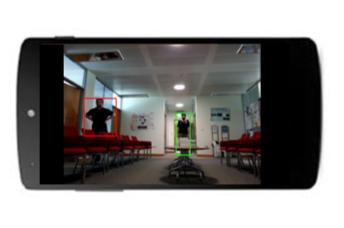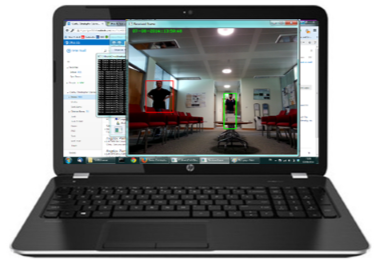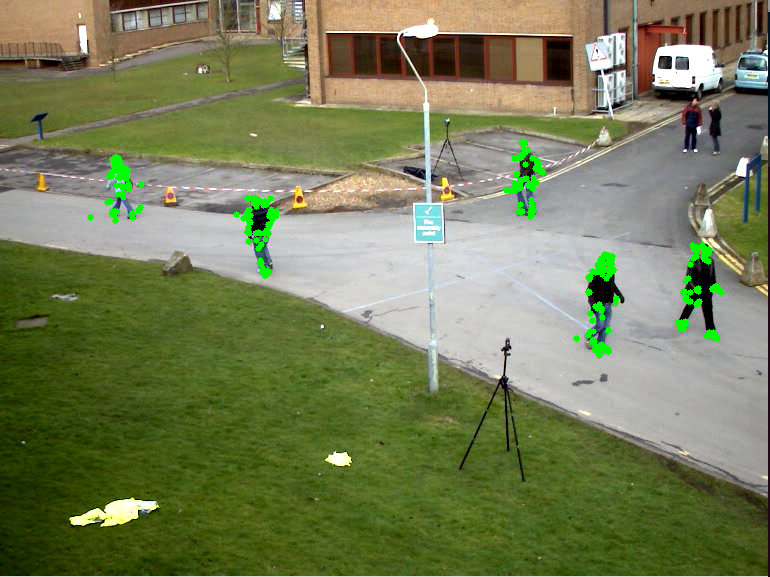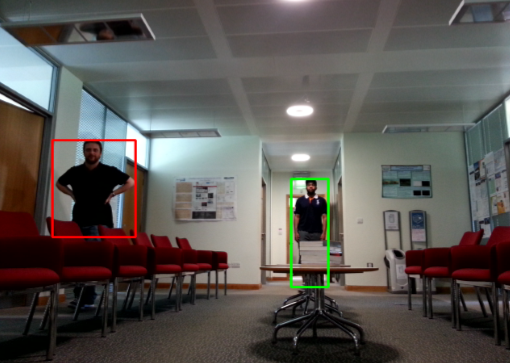Applications
The primary feature of SARIVA is the detection of visual novelties using the video stream from a smartphone’s optical camera. The app automatically separates the interesting and novel objects from the background scene. Novel objects are classed as those which are non-stationary - for example, people, cars, bikes, lorries and animals, moving through a given scene. The detected novelties can then be identified, classified and tracked. The algorithms behind SARIVA provide a fast and computationally-efficient first step to completely autonomous video-analytics - namely, that of detecting and clustering novelties.
The features of the SARIVA app are as follows:
-
Novelty detection using a static or moving camera
-
The transmission of detected novelties to a server application in real-time
-
Tracking detected novelties from image to image
-
Innovative, proprietary registered IP
The technology behind SARIVA can be used for various applications, ranging from home and commerical security to wildlife monitoring. A selection of possible applications are listed below.
Home and commercial security
Unmanned aerial and ground vehicles
Motorways and traffic monitoring
Wildlife monitoring
Crowd analysis
Operation
One of the main featurs of SARIVA is the ability to communicate (in real-time); via wifi, with a server application when it encouters any novelties, which are then stored externally on the server as video files. This is demonstrated graphically below.



Algorithms
SARIVA employs cutting edge proprietary IP implemented in a form of smart algorithms. These were developed within the Intelligent Systems Research Lab, Data Science Group at InfoLab21. The main algorithms employed are listed below.
Recursive Density Estimation (RDE). A computationally fast and efficient pixel-wise method of detecting visual novelties, patented.
Recursive Total Sum Distances Density Estimation (RTSDE). RTSDE builds on RDE but uses integers only and removes division — it's an even faster and more robust algorithm, developed specifically for video analytics.
Optical ORB. A very fast method of detecting novelties, which accounts for when the camera is moving. Indeed, one of the main challenges in novelty detection is accouting for camera movement.
ELM (Evolving Local Means) Clustering. ELM clustering is used for identifying objects. Specifically, it is used to distinguish one from another and is an essential step before object identification and/or tracking.
Algorithm Outputs
About
SARIVA is a project developed at Lancaster University's Intelligent Systems Lab and funded by Lancaster University.
Developed by Prof. Plamen Angelov (Principal Investigator), Majid Yusuf and Chris Clarke.
Contact
Intelligent Systems Lab.
Data Science Group Leader
School of Computing and Comms
Infolab21, Lancaster University
Lancaster, LA1 4WA, UK
Prof. Plamen Angelov (Principle Investigator)
p.angelov@lancaster.ac.uk
Majid Yusuf (Developer)
majid.yusuf@hotmail.co.uk
Chris Clarke (Developer)
c.j.clarke21@gmail.com
The app can be downloaded from Google Play store follwoing the link:


